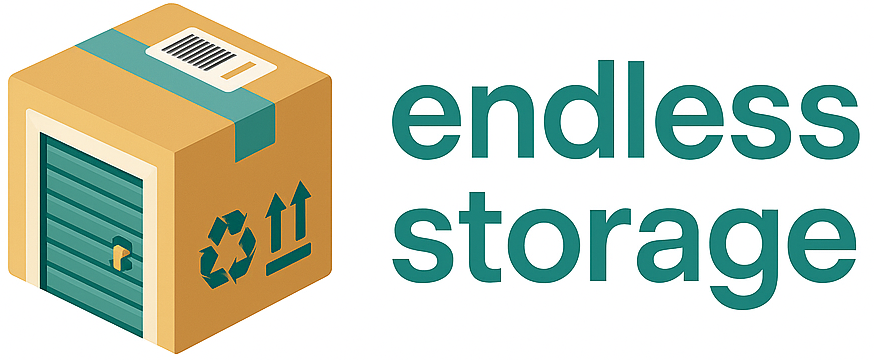Downsizing is so much more than just getting rid of stuff. It’s a conscious decision to design a life with more financial freedom, less maintenance, and more time for the things you actually love. It's about trading square footage you don't need for the flexibility and peace of mind you do.
Why Downsizing Is More Than Just a Move
Shifting to a smaller home is one of the most powerful ways to reshape your life, and it’s not just a trend for retirees anymore. I see individuals and families from all walks of life intentionally stepping away from the "bigger is better" mindset. They're choosing to invest in meaningful experiences instead of just accumulating more possessions.
Figuring out your personal "why" for downsizing is a critical first step. It transforms what can feel like an overwhelming chore into an empowering life upgrade and sets a positive tone for the entire process.
The Real Motivations Driving the Trend
The reasons people downsize are deeply personal, but a few common themes pop up again and again. Most people are looking for a life with less stress, fewer weekend chores, and lower bills. For many, the constant upkeep of a large property eventually becomes a real burden, eating up both time and money that could be spent elsewhere.
By letting go of the excess, you’re not just clearing physical space; you’re clearing mental and emotional space. This allows you to focus on your relationships, hobbies, and personal growth instead of being weighed down by clutter and maintenance.
A Smart Financial and Lifestyle Choice
The shift toward smaller living spaces is also a smart, practical response to today's economic realities. The trend has picked up steam as people rethink what's truly important. In fact, data from the US Census Bureau shows a growing preference for smaller homes. Some economic analyses even suggest downsizing can save a household between $5,000 to $15,000 annually once you factor in all the related costs.
To help you think it through, here's a quick checklist to see if this path aligns with your goals.
Is Downsizing Right for You? A Quick Check
Use this checklist to evaluate if downsizing aligns with your current life stage and financial goals.
This table isn't a definitive answer, but it's a great starting point. If you found yourself nodding "yes" to several of these, downsizing is definitely worth exploring further.
Ultimately, this is about living more intentionally. Whether you're an empty nester, seeking a simpler urban lifestyle, or just want your home to reflect your values, downsizing is a proactive step toward a more fulfilling future. When you're ready to get started, our guide on how to downsize before moving offers a clear roadmap for your journey.
Create Your Personal Downsizing Blueprint
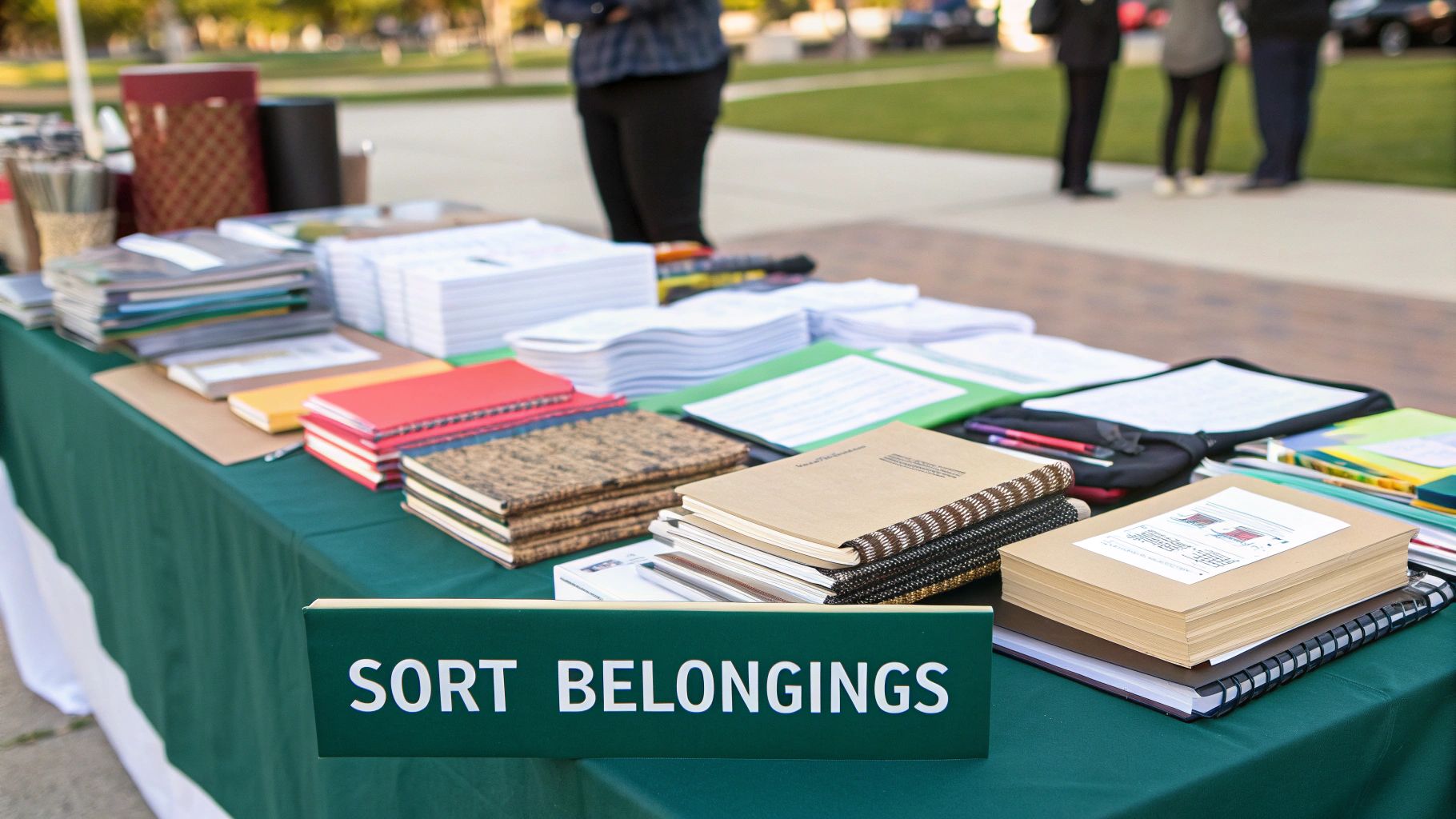
A successful downsize happens long before you even think about packing a box. The secret is to stop thinking like someone who’s just moving and start acting like a project manager. It’s all about creating a smart, strategic plan that takes the guesswork out of your decisions, cuts down on stress, and helps you sidestep those frustrating mistakes.
Think of it as your own personalized blueprint for this transition. This isn’t just another to-do list. It’s a detailed roadmap that lays out your timeline, considers the realities of your new home, and aligns with your goals for a simpler, more streamlined life.
Measure Twice, Move Once
I’ve seen it happen countless times: someone pays to move a beloved sofa or dining set, only to find it won't fit through the door or completely overwhelms the new room. It's a common and completely avoidable mistake. The fix is simple: get the exact dimensions of your new space.
If you can, get into your new home with a measuring tape. If that’s not an option, ask the realtor or landlord for a detailed floor plan with all the key measurements. Don’t just look at the room sizes—pay close attention to doorways, hallways, and any awkward corners that could trip you up on moving day.
With those numbers in hand, sketch out a simple floor plan. No need for an architectural rendering; graph paper and a pencil are your best friends here. This visual guide is about to become your most trusted tool for making confident calls on what to keep. You might discover that your huge sectional is a no-go, but those two comfy armchairs will fit perfectly. That's a discovery that saves you moving costs and a major headache later.
Your floor plan is your filter. Before you decide to keep a piece of furniture, ask yourself, "Where, exactly, will this go?" If you can't place it on your map, it's a strong candidate for selling or donating.
Establish a Realistic Timeline
Downsizing is a marathon, not a sprint. Treating it like a weekend project is a one-way ticket to burnout and making rushed, regretful decisions. A sensible timeline is what allows you to be thoughtful and intentional every step of the way.
The best approach is to work backward from your move-out date. As a rule of thumb, give yourself at least eight weeks for the whole process. If you have a larger home or a lot to sort through, twelve weeks is even better.
Now, break that master timeline into smaller, weekly goals. This keeps the whole project from feeling overwhelming. Here's a sample schedule you can adapt:
- Weeks 1-2: Finalize your floor plan and get a quick win by starting with a small, low-emotion area like the linen closet or guest bathroom.
- Weeks 3-4: Move on to tackling larger rooms, one by one. This is also the perfect time to start taking good photos of any items you plan to sell online.
- Weeks 5-6: Time to face the more challenging zones, like the attic, garage, or boxes of sentimental items. You should also start prepping your current home for sale. As part of this, you might find some great advice in these essential home staging tips to help make your space irresistible to buyers.
- Weeks 7-8: Arrange for charity pickups, finalize any sales, and start the final packing of everything you've officially decided to keep.
This methodical approach turns a mountain of a task into a series of manageable hills. It gives you the mental space you need to sort, decide, and organize without that crushing pressure of a looming deadline. You’ll be starting your journey to a simpler life on the right foot—calm, collected, and in control.
The Art of Decisive Decluttering
This is where the real work of downsizing begins—letting go. It’s less about just filling boxes and more about making clear, confident decisions that honor your past while making space for your future. This is the emotional core of the whole process, and it calls for practical strategies, not just vague advice.
You need a system. Something that prevents you from just shuffling piles of stuff from one corner to another. One of the most effective tools I've seen is the Four-Box Method. It’s incredibly simple. Just set up four distinct areas or containers and label them:
- Keep: For items that are essential, genuinely useful, or deeply loved—and that will actually fit in your new home.
- Sell: Things that still have value but no longer serve a purpose for you.
- Donate: Perfectly usable items that could bring joy or utility to someone else.
- Discard: Anything that’s broken, expired, or simply has no other home.
This straightforward sorting structure forces an immediate decision on every single item you touch. Trust me, it’s a powerful way to build momentum and see real progress.
A New Mindset for Tough Decisions
The biggest roadblock for most people is "decision fatigue"—that feeling of being so mentally wiped out that you just can't make one more choice. To fight this, you have to reframe how you think about your belongings.
Instead of asking, "Will I need this someday?"—which is an invitation to imagine a dozen unlikely scenarios—ask yourself a much more direct question: "Would I buy this today?"
This simple switch cuts right through the emotional noise. It forces you to evaluate an item based on its current value in your life. If the answer is a hard no, it’s a clear sign you can let it go without regret. For a deeper dive into breaking free from clutter, our guide on how to get rid of clutter offers more powerful techniques.
Another helpful approach is the Container Concept. The rule is beautifully simple: you can only keep what fits into a designated space. For example, maybe all your coffee mugs must fit on one specific shelf in the new kitchen. If you have more mugs than shelf space, you have to pare them down. This method grounds your decisions in the physical reality of your smaller home, making it much easier to stay objective.
This infographic simplifies how to handle the items you've decided to part with.
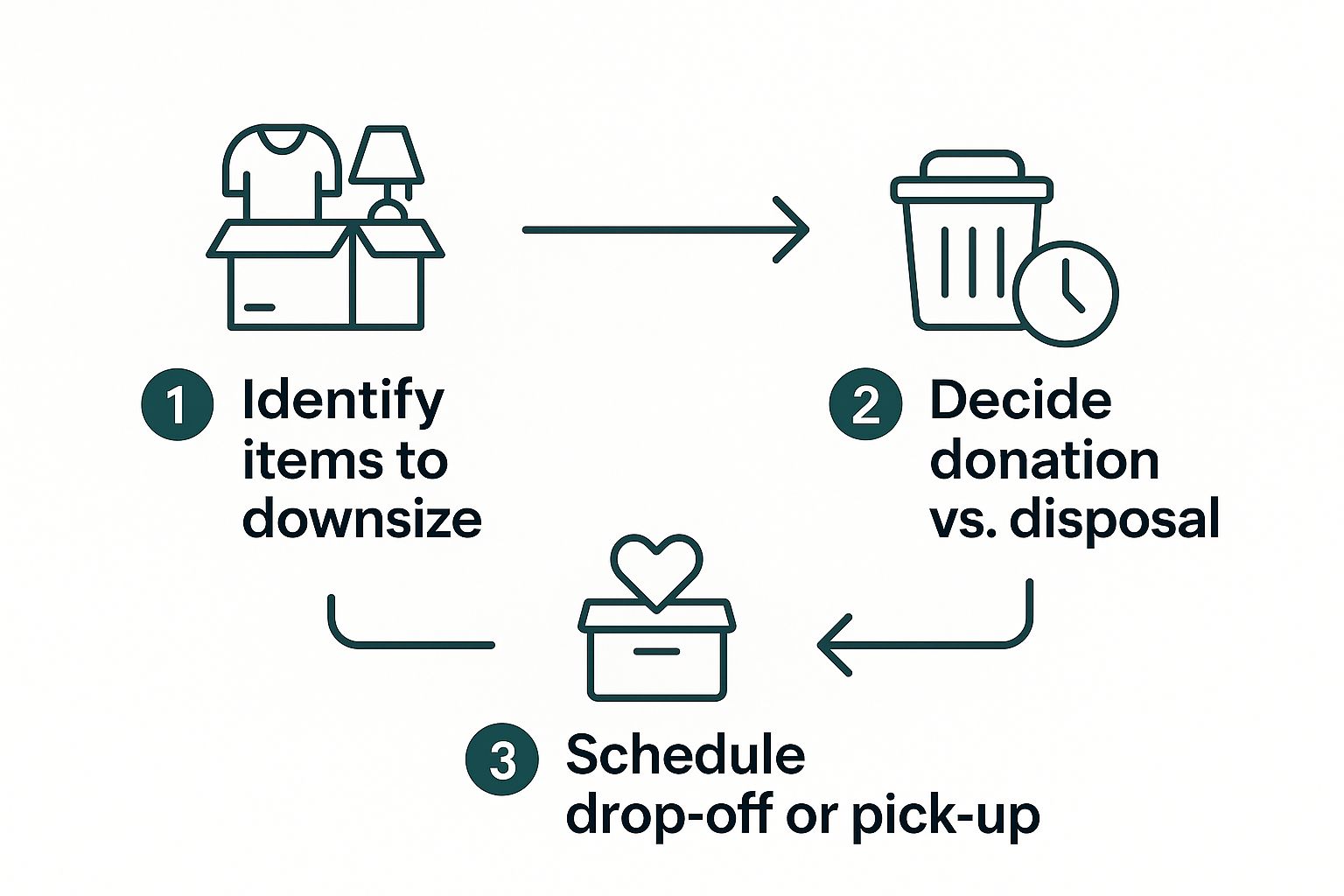
As you can see, identifying what you have, deciding its fate, and then acting on that decision creates a clear path for every item leaving your home.
Honor Memories, Not Objects: For those really sentimental items, remember that the memory is inside you, not the object itself. A great trick is to take a high-quality photo of the item, write down the story behind it, and create a digital or physical scrapbook. This lets you cherish the memory without the physical burden of keeping every single heirloom.
Turn Clutter Into Cash or Contributions
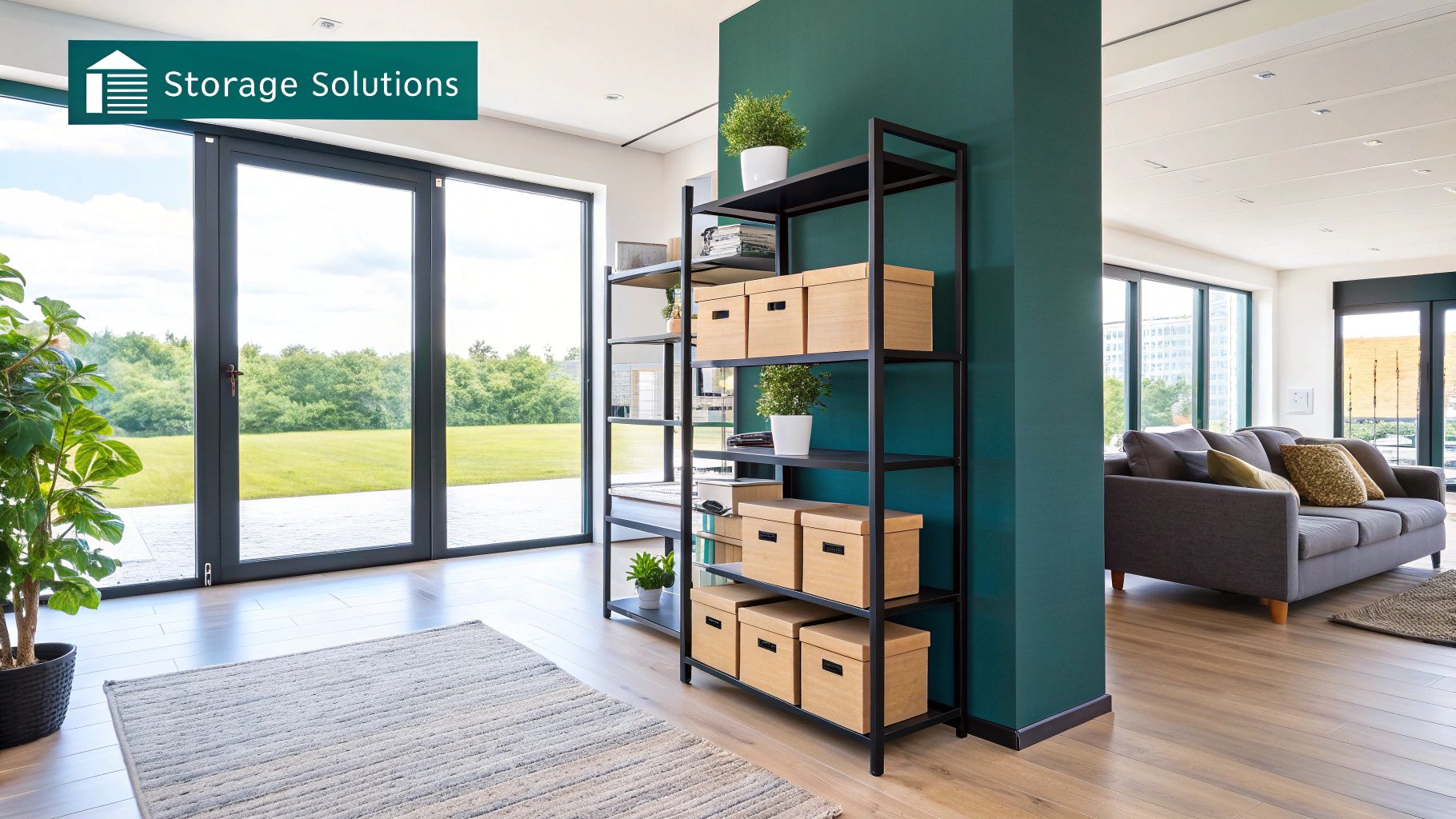
You’ve made the tough calls and sorted your belongings. Now what? It’s time for the rewarding part—turning those piles into either cash in your wallet or a meaningful contribution to your community. This isn’t just about getting rid of stuff; it's about giving your unwanted items a second life.
The biggest mistake I see people make is letting those "sell" and "donate" piles sit for weeks on end. They become just another form of clutter. The key is to have a clear, simple workflow for getting everything out the door quickly.
Selling Your Unwanted Items
Selling your higher-value belongings is a fantastic way to offset moving expenses or just treat yourself to a nice dinner in your newly streamlined space. But not all selling platforms are created equal. The right choice depends on what you're selling and how much time you're willing to invest.
Here are a few popular routes to consider:
- Facebook Marketplace & Local Apps: These are my go-to for furniture, electronics, and anything too bulky or fragile to ship. You can reach a huge local audience almost instantly. My advice? Take clear, well-lit photos and write honest, detailed descriptions to attract serious buyers and minimize back-and-forth questions.
- Consignment Stores: Perfect for designer clothing, high-end accessories, and quality home décor you don't want to deal with selling yourself. The store handles everything, but they take a hefty commission—often between 40-60% of the final sale price.
- Estate Sales: If you're clearing out an entire home or a massive volume of items, an estate sale company can be a lifesaver. It’s a completely hands-off approach, but it also comes with the highest fees.
The most successful sellers price their items to move. Do a quick search to see what similar items are selling for in your area and price yours competitively. Remember, the goal is to declutter, not to launch a retail empire.
Making Meaningful Donations
For items you'd rather give away, donating is a powerful way to ensure they continue to be useful. But don't just dump everything at the nearest thrift store. A little bit of targeted research can make your generosity go so much further. And if you're looking for more ways to clear out your space, check out our guide on how to minimize your home.
Think about which causes matter to you and find organizations that align with those values. Many non-profits have very specific needs. For instance:
- Furniture Banks: These charities are incredible resources, providing essential home furnishings to families transitioning out of homelessness.
- Animal Shelters: Always in need of old towels, blankets, and cleaning supplies.
- Local Libraries: Many accept book donations for their collections or to sell at annual fundraisers.
Always check the charity’s website or give them a quick call to confirm what they accept. Nothing is more frustrating than loading up your car only to be turned away. And one last tip: don't forget to ask for a tax-deductible receipt. It’s a small financial perk for doing a good deed.
Thriving in Your New Smaller Space
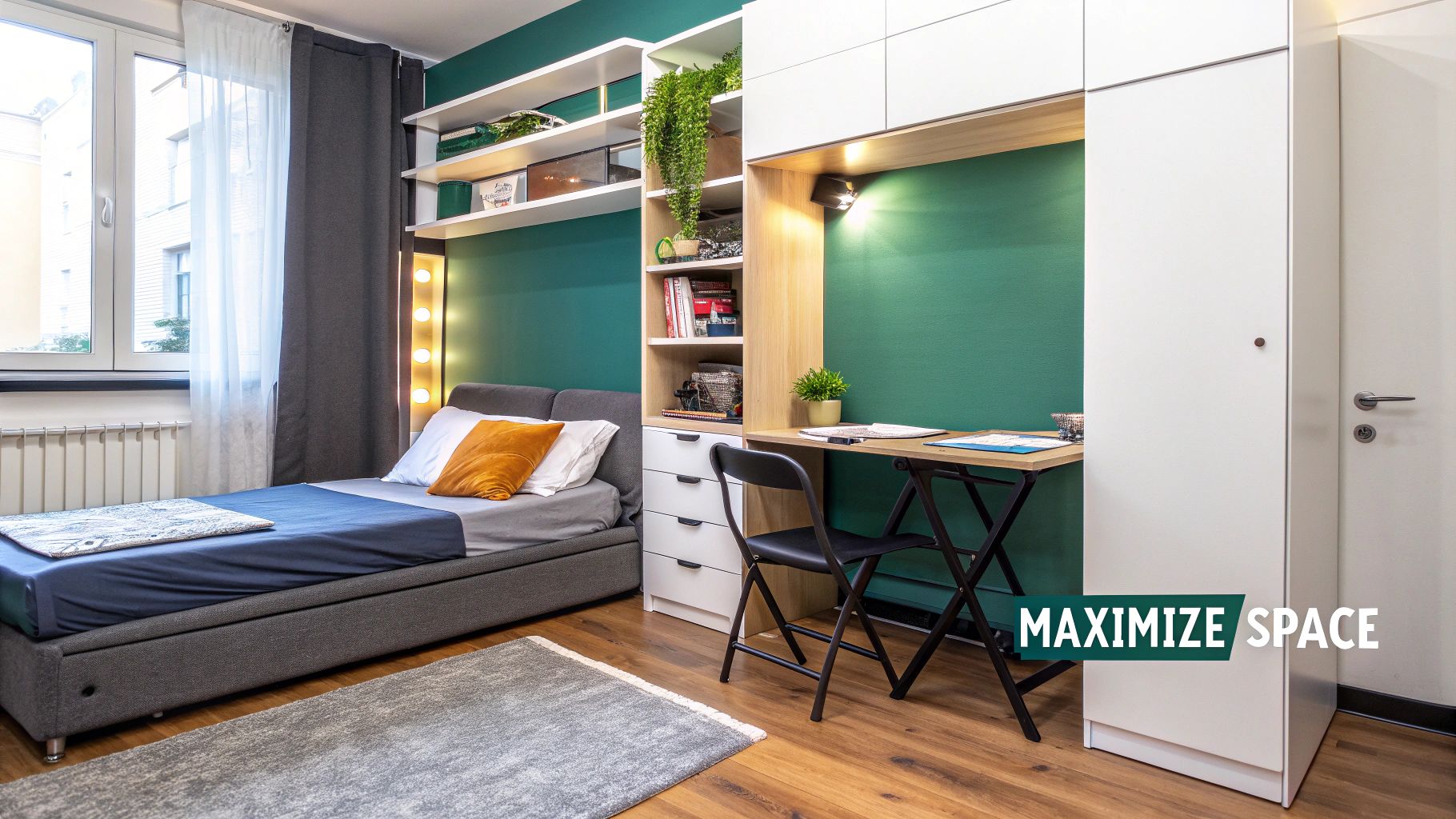
The last of the moving boxes are gone, and that echo from your bigger, emptier house has finally faded. This is where the real reward for all your hard work kicks in—learning to not just live in your smaller space, but to absolutely love it. The goal is to create a home where every square foot has a purpose, bringing you simplicity and joy instead of stress.
This new chapter isn't just about having less stuff; it’s about having more life. You'll quickly notice the perks: less time spent cleaning, lower utility bills, and a new sense of freedom to focus on what really matters to you. Leaning into this shift is the key to seeing your downsize as a powerful, positive life upgrade.
Maximize Every Inch With Smart Solutions
Living well in a smaller home is all about getting clever with your organization. It's time to think vertically and find furniture that can pull double duty. Your walls are your new best friends for storage, and every piece of furniture should earn its keep.
A few ideas I've seen work wonders:
- Vertical Shelving: Install tall, narrow bookshelves or floating shelves. This trick draws the eye upward and makes use of wall space that would otherwise be wasted. It's perfect for books, plants, and your favorite decor.
- Multi-Functional Furniture: Look for pieces that do more than one job. Think ottomans with hidden storage, a coffee table that lifts into a desk, or a bed frame with built-in drawers. These finds can dramatically boost your storage.
- Underutilized Spaces: Don’t forget about the space under your bed, above kitchen cabinets, or behind doors. These spots are prime real estate for stashing seasonal items or things you don’t need every day.
Once you’re settled, exploring innovative storage solutions for small spaces can help you truly make your home feel both spacious and organized.
Embrace the Emotional Shift
Moving into a new place is just as much an emotional journey as a physical one. It’s totally normal to feel a mix of excitement and a little bit of nostalgia. The secret is to build new routines that celebrate all the benefits of your smaller, more manageable home.
Think of it this way: corporations sometimes downsize to become more agile and focused. In 2025 alone, global companies announced over 250,000 job cuts to reposition themselves for a stronger future. Your personal downsize is a strategic move, too—a way to realign your life for more happiness and flexibility.
Downsizing isn't about loss; it's about intentionality. You've curated a home filled only with what is essential and beautiful to you. This is a powerful act of self-care that simplifies daily life and reduces mental clutter.
The real beauty of this whole process is discovering just how little you actually need to be happy. For many, this journey is part of a bigger life change, and there are countless reasons to relocate that go hand-in-hand with the desire for a simpler life.
Enjoy your new home. You've earned it.
Common Downsizing Questions Answered
Even the most well-thought-out plan hits a snag. As you start the process of downsizing, questions and little uncertainties will inevitably pop up. That’s a completely normal part of the journey. Think of this section as your quick guide for those "what if" moments that can derail your progress.
Getting these common concerns out of the way can be the difference between a stressful, overwhelming project and a smooth, empowering transition.
How Long Does It Really Take to Downsize a House?
This is the big one, and the only honest answer is: it depends. But for a typical family home, a realistic timeline is about two to three months of consistent effort. This gives you enough breathing room to work your way through the house without getting completely burned out.
The goal is to spread the work out so you can make thoughtful decisions you won't regret later. A great approach is to dedicate a few hours each weekend to the task. You’ll be genuinely surprised by how much you can accomplish with those focused, bite-sized sessions. For a detailed roadmap to get you started, our guide on how to start decluttering is a fantastic resource.
What Is the Hardest Part of Downsizing?
Hands down, the biggest challenge for almost everyone is dealing with the emotional side of letting go. We're talking about those sentimental items that are so much more than just stuff. They're physical links to precious memories, people we love, and important chapters of our lives. It can feel like you’re saying a series of small goodbyes.
The key is to reframe your thinking. You are not erasing your memories; you are curating them. The memories themselves live in your heart and mind, not in the objects.
To make this part more manageable, allow yourself to keep a small, curated collection of your absolute most treasured heirlooms. For the rest, try creating a digital "memory box" by taking high-quality photos. This simple act honors the item and its story, making it much easier to release the physical object without losing that precious connection.
Should I Get a Storage Unit When Downsizing?
A storage unit can feel like a lifesaver, but it's a tool you have to use very carefully. It can be incredibly helpful as a temporary stopgap—maybe you're between homes or you're truly on the fence about a few large, valuable pieces of furniture.
The danger, however, is real. A storage unit can quickly become an expensive way to procrastinate, morphing into a permanent "clutter closet" that you pay for month after month. If you go this route, you need to set some firm ground rules for yourself:
- Set a deadline. Commit to clearing out the unit within a specific timeframe, like three to six months. No excuses.
- Define its purpose. Know exactly what the unit is for and have a plan for where those items will ultimately go.
- Don't forget the goal. Real downsizing is about learning to live comfortably with less, not just shifting your clutter to a different address.
When you need a flexible, temporary solution to bridge the gap in your downsizing journey, Endless Storage offers a modern alternative. Instead of renting a whole unit, you can store just what you need, box-by-box, with convenient pickup and delivery right from your door. Learn more at https://www.endless-storage.com.
Frequently Asked Questions
Unveiling the Secrets to Effortless Storage
Endless Storage is available nationwide. You pick a plan, tell us where to pickup, and we'll send a UPS van to collect, whichever state you're in.
Your shipping label will be sent to your email within a few minutes, if not instantaneously. It can also be accessed through your customer profile.
Your box will be shipped to one of our climate controlled self storage facilities in our closest self storage facility. Our manager will accept your package, notify you that your box has been received, and securely stored. Only our managers will have access to Endless Storage boxes.
Email us at admin@endless-storage.com click to live chat with us, or send us a message below.
Never! We're committed to transparent pricing with no surprises. You'll lock in your rate with no hidden fees and no long-term contracts.
Fast access guaranteed! Your boxes will arrive at your doorstep within 48 hours of requesting them back. Need to check on delivery? We provide tracking information for complete peace of mind.
Totally flexible! Store month-to-month with no long-term commitment and cancel anytime.
Everything's online! Use your account dashboard to:
• Set up automatic monthly payments
• Request box returns
• Update your address
• Order additional boxes
• Track shipments
Your boxes are insured up to $100 each. Our customer service team will help you file any necessary claims and resolve issues quickly.
Don't worry – we'll email you right away if there's a payment issue. Your items stay safe, though you may have temporary service interruption or late fees until payment is resolved.
When you request our free storage kits, you'll have 30 days to send in your boxes to activate your 3 months of free storage. Think of it like starting a gym membership – your activation window begins when you receive your kits, and your full free trial begins once you send in your first box. During your free months, you'll experience our complete storage service at no cost.
Your 30-day activation window begins when you receive your storage kits. We'll send you an email confirmation when your kits are delivered, marking the start of your activation period.
If you haven't sent any boxes for storage within your 30-day activation window, your free trial will expire and we'll begin charging the regular monthly rate of $9.99 per box. This helps ensure our storage kits go to customers who are ready to use our service.
A box costs $9.99 per month to store (plus sales tax). This price includes free shipping for standard boxes under 50 lbs. and smaller than 16"x16"x16"
Log into your Endless Storage account, locate the box you would like returned, and simply click Return My Box.
Yes, each box stored with us is insured for up to $100 throughout transit as well as the duration of storage within our facilities.
Your box will be at your doorstep within 48 hours of you requesting it back.
Store 10+ boxes? We'll pick them up for free! After your purchase, we'll contact you to schedule a convenient pickup time and arrange UPS collection.
We trust UPS with all shipments, and every box includes $100 insurance coverage. You'll receive tracking information to monitor your items' journey.
Yes! Visit any of our locations by appointment. Just bring a photo ID matching your customer profile.
For everyone's safety, we can't store hazardous materials, firearms, or perishables. All items must fit within our standard boxes.
It's easy! Order your storage kit online, and we'll ship it to you within 1-2 business days. Your shipping labels will be emailed instantly and available in your account.
We're here to help! Email us at admin@endless-storage.com, use our live chat, or send us a message through your account.
To cancel your storage service with Endless Storage, please email your cancellation request to admin@endless-storage.com. Our team will process your request within 2 business days and confirm your cancellation via email.
We understand packing takes time. However, to maintain your free trial benefits, you'll need to send at least one box within the 30-day activation window. If you need more time, you can always start with one box to activate your trial and send the rest later. You can always reach out to admin@endless-storage.com if you have any issues or concerns.
When you request our free storage kits, you're starting a 30-day window to begin using our storage service.
To avoid any charges, simply send at least one box for storage within 30 days to activate your 3-month free trial. If you decide not to use our service and don't send any boxes within the 30-day window, a one-time $50 fee will apply to cover the costs of materials and shipping. This helps ensure our storage kits go to customers who are ready to use our service.
Think of it like reserving a hotel room – we're setting aside space and sending specialized packing materials for your use. The fee only applies if you request materials but don't begin storage, similar to a hotel's no-show charge.
